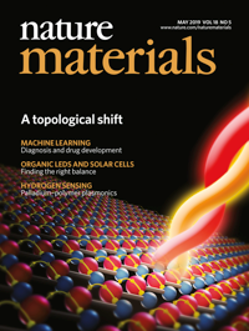Our recent research interest includes (but not limited to)
Optoelectronics based on topological semimetals
Broadband, efficient and fast conversion of light to electricity is crucial for sensing and clean energy. At present, limited by the dark current and the relaxation time of photogenerated carriers, the traditional long-wavelength detection technology based on narrow band semiconductors is difficult to simultaneously meet the requirements of wide spectrum, miniaturization, uncooled and high sensitivity. Therefore, the further improvement on the performance of optoelectronic devices in the future mainly depends on the introduction of new material systems, new device structures and new physical mechanisms. Our group pioneered on introducing and developing topological semimetals materials for future high-performance photodetection. These topological semimetals exhibit diverse and intriguing physical phenomena due to the non-trivial topological features in its band structure. These topological characters will lead to novel light-matter interactions and allow for dramatic quantum control. The interesting physics discovered from these endeavors is equally important for light harvesting and many other optoelectronic device applications.
Related publications:
"Semimetal for High Performance Photodetection” Nature Materials, 19,830 (2020)
"Robust edge photocurrent response on layered Type II Weyl semimetal WTe2" Nature Communications 10,5736 (2019)
"Nonlinear Photoresponse of Type-II Weyl Semimetals" Nature Materials, 18,476 (2019)
"Broadband Anisotropic Photo Response of the "Hydrogen Atom" Version Type-II Weyl Semimetal Candidate TaIrTe4" ACS Nano 12,4,4055 (2018)
"Anisotropic Broadband Photo Response of Layered Type-II Weyl semimetal MoTe2" Advanced Materials 30, (22),1707152 (2018)
"Ultrafast Broadband Photodetectors Based on Three-dimensional Dirac Semimetal Cd3As2" Nano Letters 17, 834 (2017)

Ultrafast Spectroscopy
Ultrafast spectroscopy has been a powerful technique for investigating the electronic and vibration properties with up to sub 100 fs time resolution. It can potentially further the understanding regarding hot carrier dynamics, photo emission, coherent effects, dephasing phenomena, many body effects, nonequilibrium distribution function, resonant and non resonant tunneling and dynamics of coherent phonons in materials of different states and different dimensionalities. Our experimental platform covers ultrafast spectroscopy from UV-visible-near infrared-mid infrared and terahertz wavelength range. Currently, we are mainly focus on two dimensional semiconductors and topological semimetals, which are both interesting for high performance electronic, spintronic and optoelectronic and spintronics devices. These studies provide indispensable device physics of photoexcited carriers for high field/speed electronic, optoelectronic and remote sensing devices.
Related publications:
"Light-induced emerging phenomena in two-dimensional materials and topological materials" DOI: s42254-021-00388-1 Nature Reviews Physics, (2021)
"Dynamical Evolution of Anisotropic Response of Type-II Weyl Semimetal TaIrTe4 under Ultrafast Photoexcitation" Light: Science & Applications, 10, 101(2021)
"Dynamical Evolution of Anisotropic Response in Black Phosphorus under Ultrafast Photoexcitation" Nano Letters , 15 ,4650 (2015)
"Valley Carrier Dynamics in Monolayer Molybdenum Disulfide from Helicity-Resolved Ultrafast Pump–Probe Spectroscopy" ACS Nano 7, 11087-11093 (2013)
"Ultrafast hot-carrier-dominated photocurrent in graphene" Nature Nanotechnology 7, 114-118 (2012)
"Ultrafast relaxation of excited Dirac fermions in epitaxial graphene using optical differential transmission spectroscopy" Physical Review Letters 101, 157402 (2008)
Optical frequency comb and dual comb spectroscopy
Optical frequency comb (OFC) is becoming a high-quality next-generation light source. Ultrafast pulses with a fixed repetition rate correspond to a series of accurately and evenly spaced lines in optical spectrum, widely known as a “precision frequency ruler”. It has attracted much attention in the field of metrology, absolute distance measurement and high-resolution spectroscopy et al by virtue of its excellent performance in frequency accuracy, coherence, and controllability. In condensed matter physics, dual-comb spectroscopy (DCS) realized by combining two OFCs is an powerful tool for rapid, high precision and sensitive spectroscopic measurements of materials. Our group are dedicating on a new concept and application of DCS recently. Coherent synthesis of two OFCs is applied to build up a polarization-modulated light source whose modulation frequencies can reach up to radio frequency range. This technology breaks the limitation of conventional polarization-modulation methods, and will play a vital role in characterization of polarization-sensitive ultrafast processes in novel quantum materials, such as topological Weyl semimetals et al.
Related publications:
"Research progress on coherent synthesis of optical frequency comb" Chinese Optics,14,1056 (2021)
"Radio frequency polarization modulation based on an optical frequency comb" Review of Scientific Instruments 91,083111 (2020)
On the other hand, we have active collabrations with groups in ICQM and all around world on some other intersting projects,click here for more details.
OPGE video (coming soon)